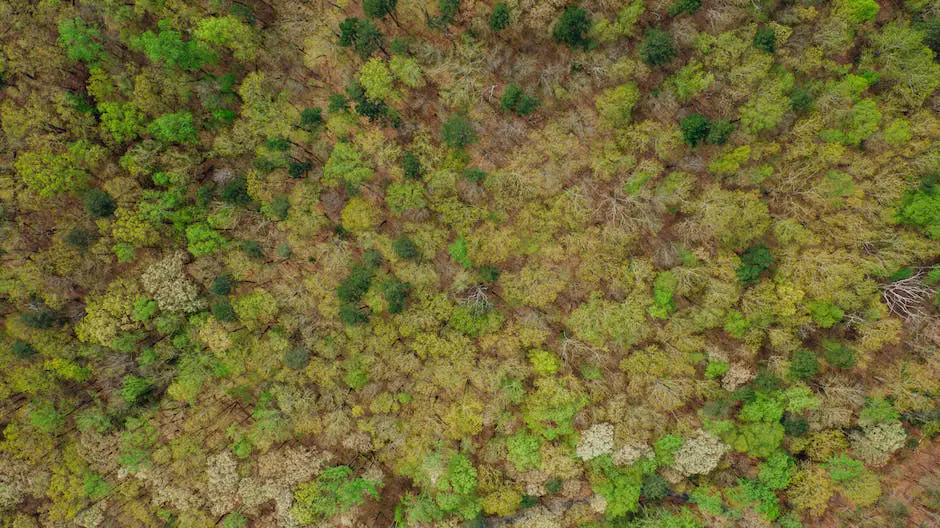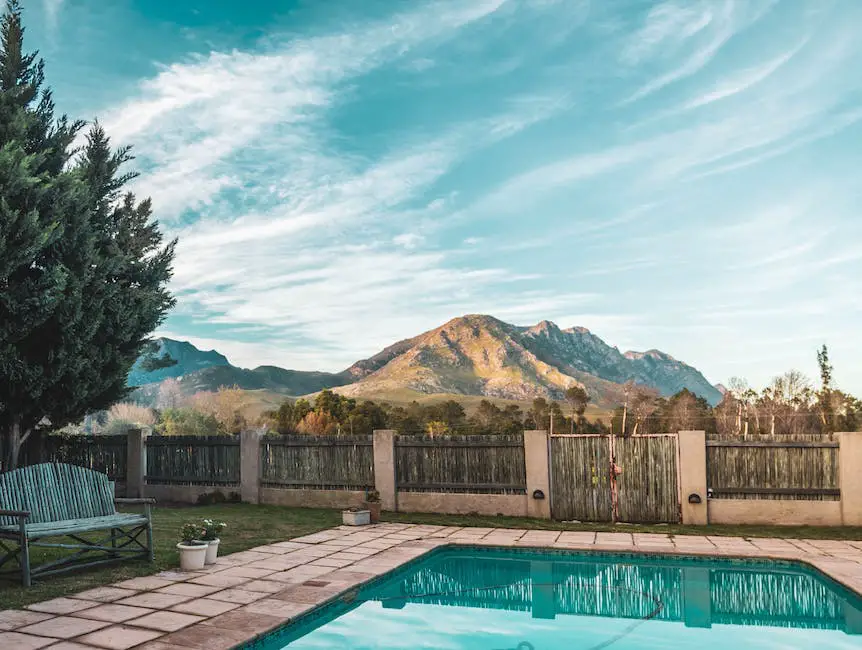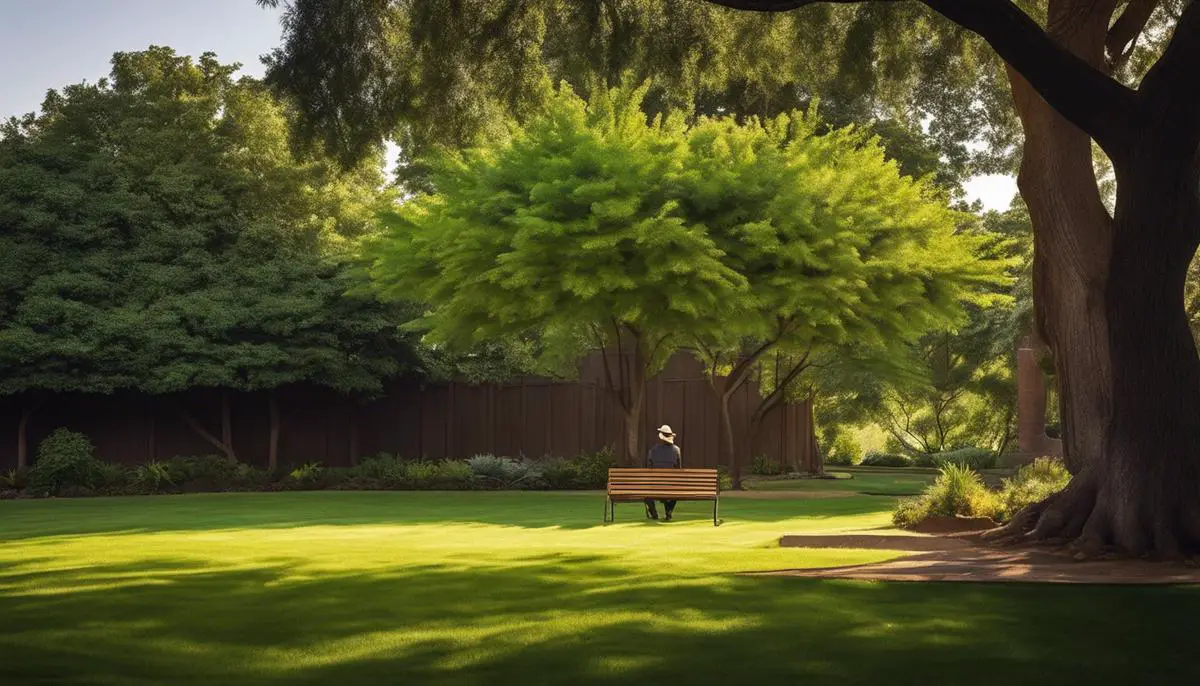Choosing the right tree for shade in your yard is a decision that can drastically enhance your home’s comfort and aesthetic.
In this post, we will help you navigate through this journey by exploring various factors that ultimately determine the best tree for your yard.
From assessing your unique needs based on factors like yard size, climate, soil type, and nearby structures to identifying the amount of shade you desire, we aim to provide comprehensive information.
Additionally, we will introduce a selection of trees renowned for their incredible shade giving abilities, sharing their unique characteristics, growing speed, and the type of shade they offer.
Finally, promoting longevity and robust health for your chosen shade tree will be discussed, covering important care practices and measures for disease and pest prevention.
This is not just about finding the right tree it’s about creating an ideal environment that fosters growth, cools your home, and brings charm to your landscape.
Identifying Your Needs
Are you thinking about planting a shade tree in your yard?
Well, you’re in luck, because adding a shade tree is one of the most rewarding investments you can make in your home, not only for the aesthetics but also for the comfort they provide and the value they can add to your property.
But before you get out your shovel, there are several important factors to consider.
Firstly, think about the size of your yard.
This plays a crucial role in your decision. If you’re lucky enough to have a spacious yard, you have the freedom to choose almost any kind of tree.
But, remember, larger trees often have extensive root systems that could interfere with underground utilities or damage sidewalks and driveways.
For smaller yards, choose a tree species that maintains a modest size at maturity.
Next, consider the climate zone. If you live in a hot and humid region, a drought and heat tolerant tree would be the prime candidate.
On the other hand, chilled weather demands a tree that can withstand frost and cold.
Reach out to the local nursery or extension service for recommendations that suit your climate zone.
Equally important is shade density. All shade trees are not created equal.
Some trees provide dense shade, while others offer light, dappled shade.
Determining the amount of shade required could help in selection.
If you want to plant flowerbeds underneath or enjoy a bit of sunlight, a tree with a lighter shade would be the best option.
Moreover, let not forget about maintenance.
As a homeowner, you know how important it is to balance beauty and practicality.
A tree might be a gorgeous addition to your yard today, but think about the long-term effort required for its upkeep.
Messy trees can drop leaves, pods, or fruit, leading to extra work.
Lastly, think about the wildlife. Certain trees attract particular types of wildlife.
If you enjoy watching birds or squirrels frolicking around your yard, selecting a tree that provides food or shelter for these animals could add another level of enjoyment to your outdoor space.
Choosing the right shade tree for your yard is a decision that shouldn’t be taken lightly after all, this tree will be a part of your family’s lives for years to come.
But remember, there’s no one-size-fits-all answer here.
Every yard is unique, every family is unique, and the beauty lies in exploring the options and making the best choice for your own little slice of heaven. Happy planting!

Best Types of Shade Trees
“Nurturing Your Family and Home with Shade Trees: Our Top Picks”
Our homes and families thrive best in environments where they’re both cared for and cherished.
As we unpack the topic of shade trees, we’ll find they are much more than just aesthetic fixtures.
These towering beauties are invaluable contributors to a healthy, comfortable, and eco-friendly home lifestyle.
So, let’s dive in together and explore some of the best types of shade trees perfect for your yard.
If you’re looking for a fantastic shade tree that is as hardy as it is scenic, the Northern Red Oak may be your perfect match.
Renowned for its vibrant red fall color, this giant can grow to impressive heights, providing cool shade during the summer months.
The Northern Red Oak can adapt to various soils and is quite tolerant of urban pollution, making it a good choice even for city dwellers.
Maybe a fast-growing shade tree fits your needs better.
If so, consider the Hybrid Poplar. Known for its extreme growth rate up to 5 to 8 feet per year this shade tree will give large amounts of coolness in a short time.
It also has the added benefit of acting as a windbreak, making outdoor family activities more enjoyable.
For the lovers of all things vintage, the Sugar Maple could be your tree of choice.
The Sugar Maple grows quite large and offers dense shade, lending an old-fashioned, comforting feel to your home.
When fall arrives, its foliage turns eye-catching colors, ranging from bright yellows to intense reds, capturing the quintessential spirit of Autumn.
Not to exclude our evergreen friends, the Blue Spruce makes an excellent choice for year round shade.
Its unique silvery-blue needles and conical shape give a distinct look to your property. Growing to reasonable heights, Blue Spruce is a practical option for smaller yards.
When choosing a shade tree, it’s essential to remember that each will have its quirks and require different levels of care.
For instance, the Hybrid Poplar, despite its swift growth, tends to have a shorter life span.
Keep in mind that planting a tree is a long-term investment. With each season passing, a tree will grow stronger, providing more shade, and adding more aesthetic appeal to our homes.
And hey, perhaps your delightful shade tree might become the family’s favorite outdoor reading spot, or the go-to place for a relaxing hammock nap.
In the journey of homemaking, and creating a nurturing environment for your family, shade trees are trusted allies in creating a space that is truly ‘home sweet home’.
So, let’s roll up our sleeves, ready our shovels, and prepare to bring nature closer to our homes and hearts.

Caring for Your Shade Tree
Maintaining and caring for your shade tree is just as essential as selecting the perfect one for your backyard.
After all, your chosen tree has a significant impact on the overall aesthetic and comfort of your home and is a long-term investment.
Here’s a practical guide for keeping your shade tree in top-notch condition, ensuring it thrives and continues to provide shade and aesthetic value to your home.
Watering is an integral part of tree care.
All trees, particularly newly planted ones, require adequate water for their roots to establish.
However, refrain from overwatering as it may cause root rot and other diseases. The key is consistency, making sure your tree gets a deep watering at least once or twice a week, especially during dry periods.
Fertilization is another essential aspect of tree care.
Even though trees can get nutrients from the soil, adding a slow-release tree and shrub fertilizer can provide an extra boost of nutrients.
Apply it in the early spring and fall, following the product’s directions.
Mulching isn’t just about making your landscape look neat and tidy.
It also helps conserve moisture in the soil, prevent weeds, and regulate soil temperature.
Apply a 3-inch layer of organic mulch around the base of the tree, avoiding the tree trunk to prevent rot.
Pruning makes for a healthy and well-structured tree. It helps remove dead or diseased branches and can enhance your tree’s shape and growth.
Shade trees ideally should be pruned in late winter or early spring when they are dormant.
However, if you see any broken or damaged branches, remove them immediately, irrespective of the season, to avoid any potential safety hazards.
Insect and disease control is paramount for the wellbeing of your tree. Be on the lookout for signs of infestations or diseases, such as changes in leaf color, premature leaf drop, or unusual growths on the tree.
If you spot any issues, it’s essential to address these promptly with the help of a professional arborist who can recommend suitable treatment options.
Finally, remember to anticipate the growth of your tree. As your tree grows and matures, it may have different sunlight and soil requirements.
It may also start to encroach on your home, other plantings, or utility lines. Regularly checking your tree’s growth and adjusting your landscaping plans accordingly can prevent potential problems down the line.
In conclusion, your shade tree is more than just an addition to your landscape.
It’s part of your family’s living space, actively contributing to the comfort and aesthetic appeal of your home.
Therefore, it deserves the best care and attention you can provide. After all, a healthy, thriving tree is a constant source of joy and pride for any homeowner.

Armed with the knowledge of what factors to consider, the variety of shade trees available, and best practices for tree care, you’re now prepared to make an informed decision about the best shade tree for your yard.
The right tree can transform your landscape into a tranquil and shaded retreat while also reducing your cooling costs.
As you move forward in this process, remember: choice of the tree is just as critical as its ongoing care.
Whether it’s the colorful Red Maple, the majestic Southern Magnolia, or the stately American Elm, with the right care and conditions, your chosen tree will thrive and continue to provide shade and beauty to your home for years to come.




